It is undeniable that animals are one of the most fascinating things about our beautiful planet. They can be big or small, ferocious or loving, and not-so-cute or downright adorable. Although some of these animals are so adorable they make our hearts melt, we forget that there is much more to them than a sweet face. These animals are deeply complex in their own ways which make them all the more fulfilling to look at. From flying marsupials to pygmy hippopotami, here are some incredible facts about the world's most adorable animals.
We all want a fennec fox and you'll see why!
Red Pandas
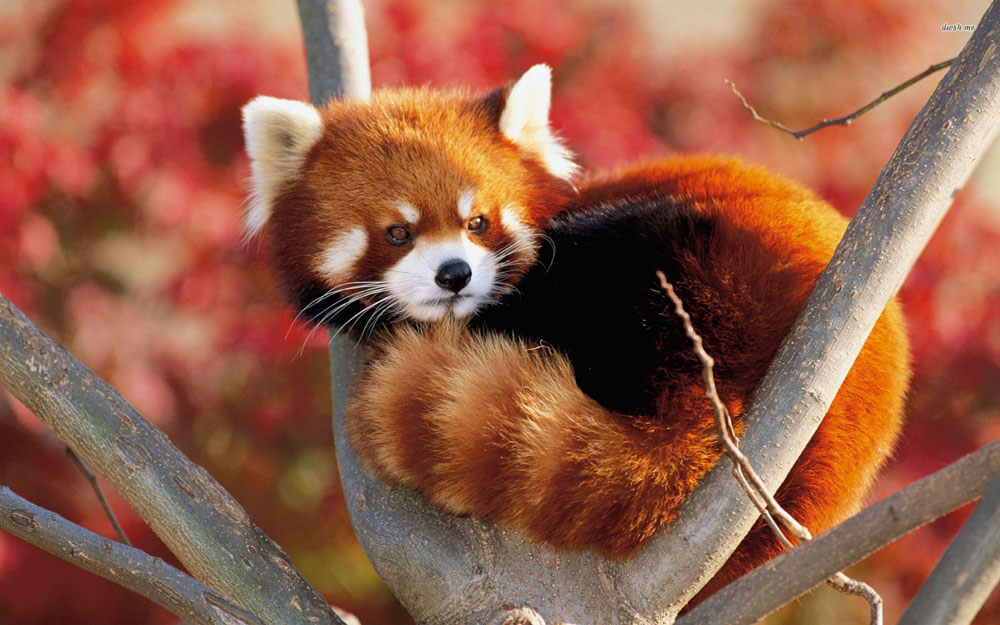
Photo Credits: Odyssey
Red pandas are quite the bundle of fluff-filled joy. They grow to be about the size of the average house cat weighing 10 to 12 pounds, yet their tails add an additional 18 inches. Living high in the mountains of Nepal, Myanmar, and central China, they use their tails as their personal blankets to keep warm. When they aren't sleeping in the trees, they are foraging for bamboo, fruit, acorns, roots, and even eggs. Except for mating, red pandas are typically shy and solitary with young red pandas remaining in the nest for only 90 days. Currently, red pandas are an at-risk species due to deforestation with their population decreasing.
Sea Lions
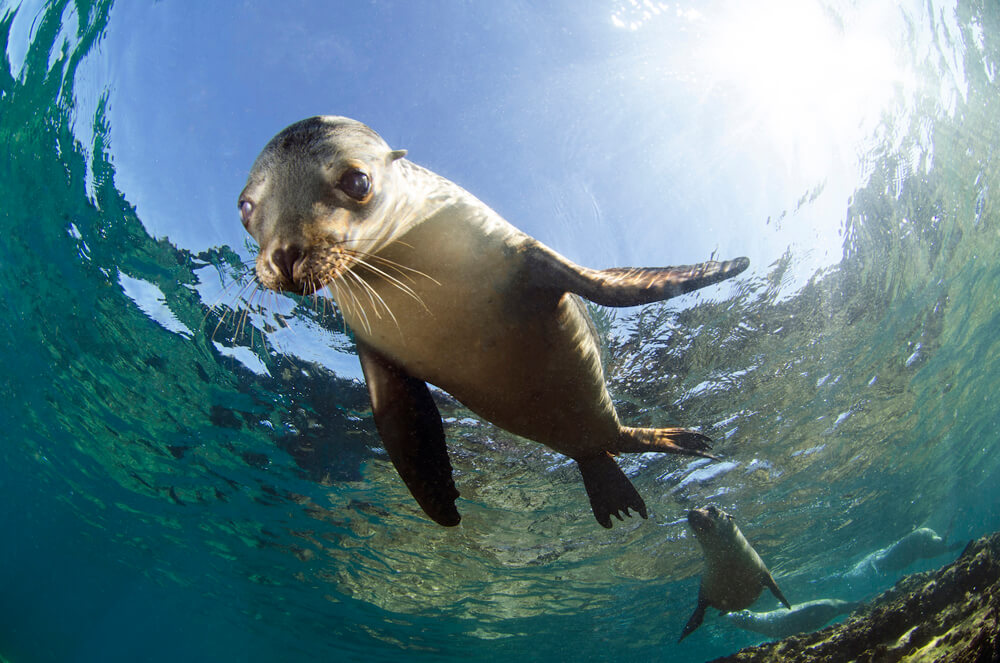
It comes as no surprise that the strikingly beautiful sea lion has been nicknamed the dog of the ocean. However, there are actually seven different species of sea lions, all belonging to a group of animals known as pinnipeds. They typically swim around 11 miles per hour when moving, but can swim up to 25 miles per hour if they need to. Sea lions are incredibly intelligent and trainable and have even been used by the U.S. Navy for tactical purposes. Sea lions are not picky eaters and eat a variety of fish and other marine life. There have been records of some sea lions living up to 30 years old and growing to 800 pounds!
Slow Loris
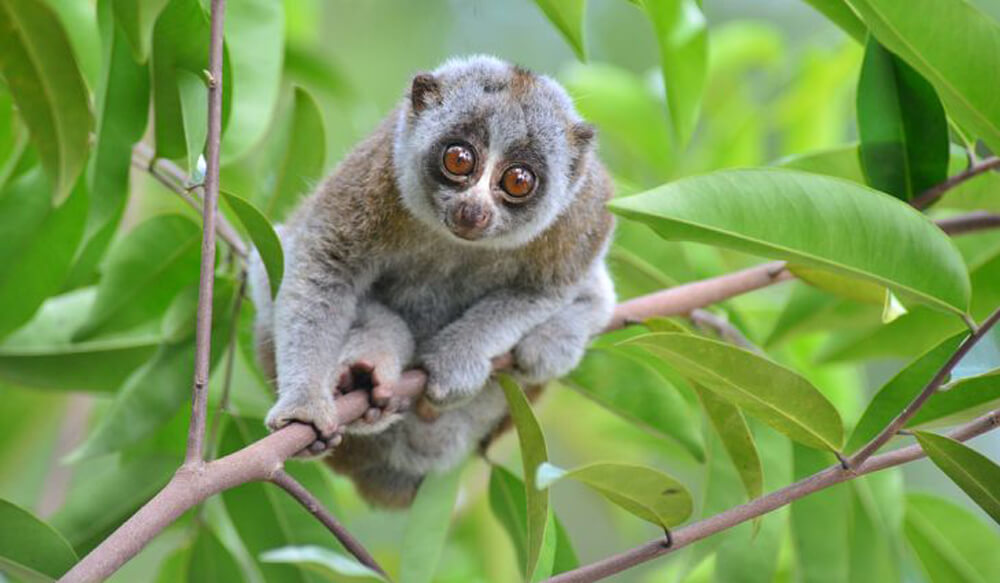
The adorable slow loris is one of 10 species of loris. They are a type of primate that can be found in India, Southeast Asia, and Sri Lanka. The name "Loris" comes from the Dutch meaning for clown most likely due to their big eyes and other curious facial features. The slow loris is nocturnal, has human-like hands, one of the longest tongues of all primates, and are among the rarest primates on earth. Although the slow loris is undeniably cute, be careful2014they have a bite that is so venomous that it can kill with no known cure or knowledge as to why it is venomous.
Capybara
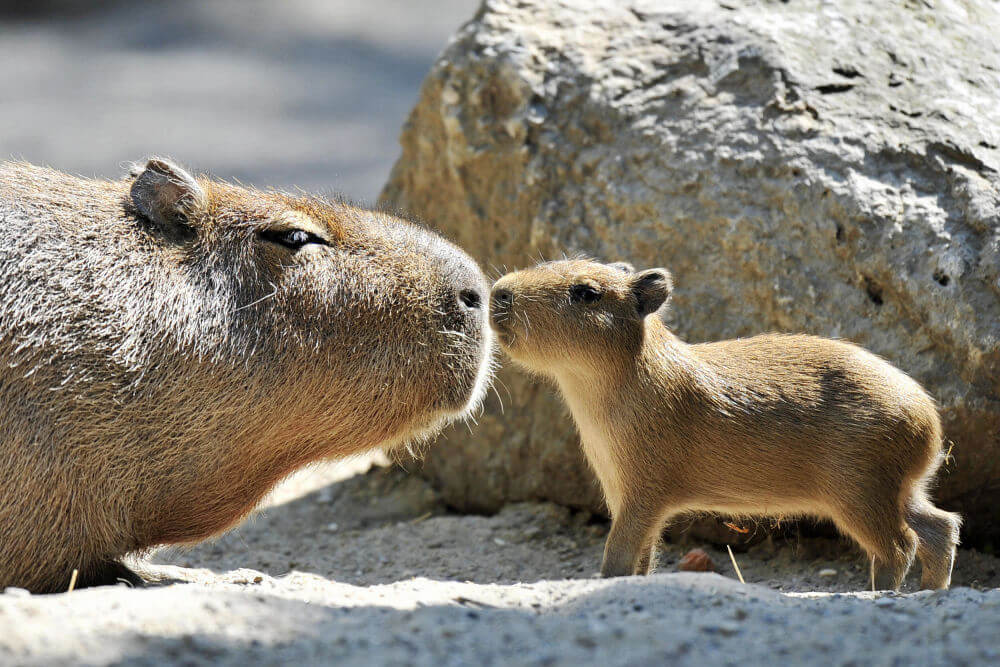
Although they may resemble beavers, the curious-yet-cute looking Capybara is actually a large rodent. Living in Central and South America, they can be found in swampy areas around lakes, rivers, and ponds. When fully grown, Capybaras can grow to be over four feet in lengths and weigh over 140 pounds! They are herbivores and the adults eat up to eight pounds of grass per day. All that grass gives these cuties lots of energy to swim, which Capybaras excel at2014they can even hold their breath for up to five minutes! They are known to regurgitate their food and eat it again to help with digestion. These adorable rodents live in groups from 10 to 30 members, but during the dry season, they can grow to over 100!
Sea Otters
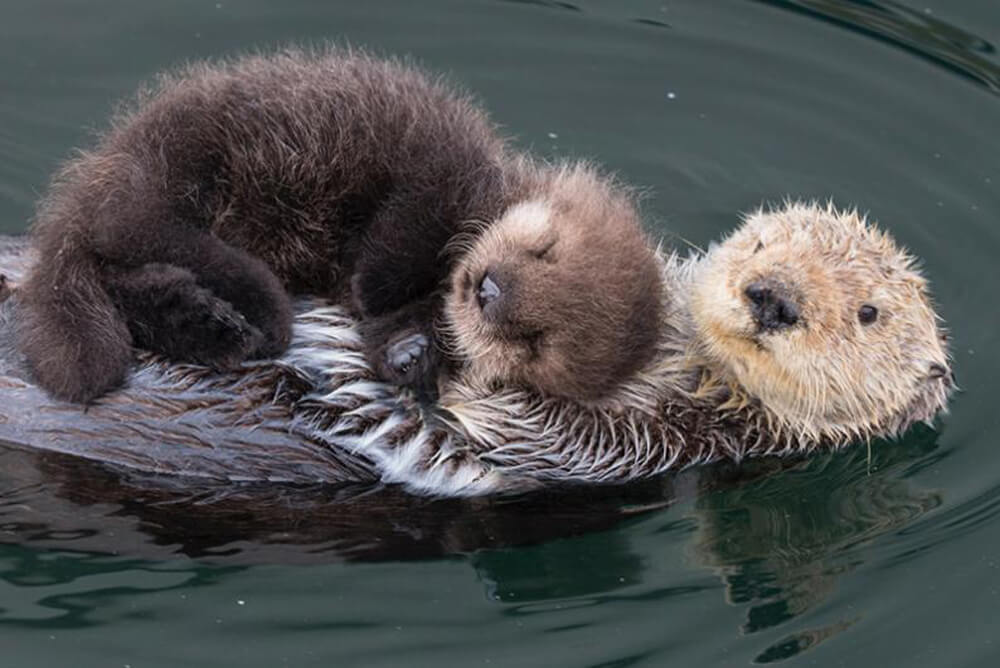
Photo Credits: Discover Wildlife
If sea lions are the dogs of the ocean, then sea otters are the puppies. A member of the weasel family, sea otters are the second smallest of all marine mammals. They don't have blubber like other marine mammals but have the densest fur in the animal kingdom. They are known to eat urchins, abalone, mussels, clams, crabs, snail, and dozens of other marine species. They live all over the shallow waters off of the northern Pacific but for the most part stick to Alaskan waters. Sea otters spend most of their life in water and can dive to over 330 feet when foraging. They are known to drape kelp over their bodies and hold hands while sleeping to not drift away. They are also one of the few other mammals other than primates to utilize tools to open shells.
Fennec Foxes
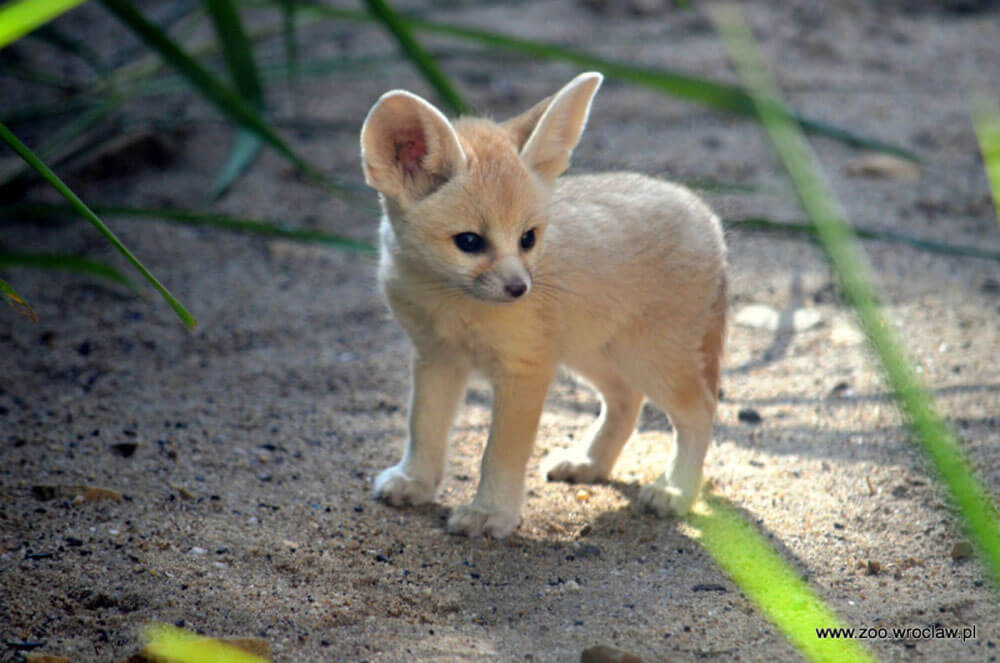
The beyond-cute fennec fox is native to the Sahara Desert in northern Africa and as far east as Kuwait. They are known for their ability to live in incredibly harsh settings and don't even need free-standing water to survive. Weighing just 1.5 to 3 pounds, they are the world's smallest species of fox and are most comparable to kittens. They also hold the record for having the biggest ears in the fox species which aids their superb hearing, as well as helps to dissipate heat and keep cool while in the desert. Fennec foxes mate for life and are known to live very social lives and live in groups of up to 10.
Keep going to see the cutest monkey around!
Sloths
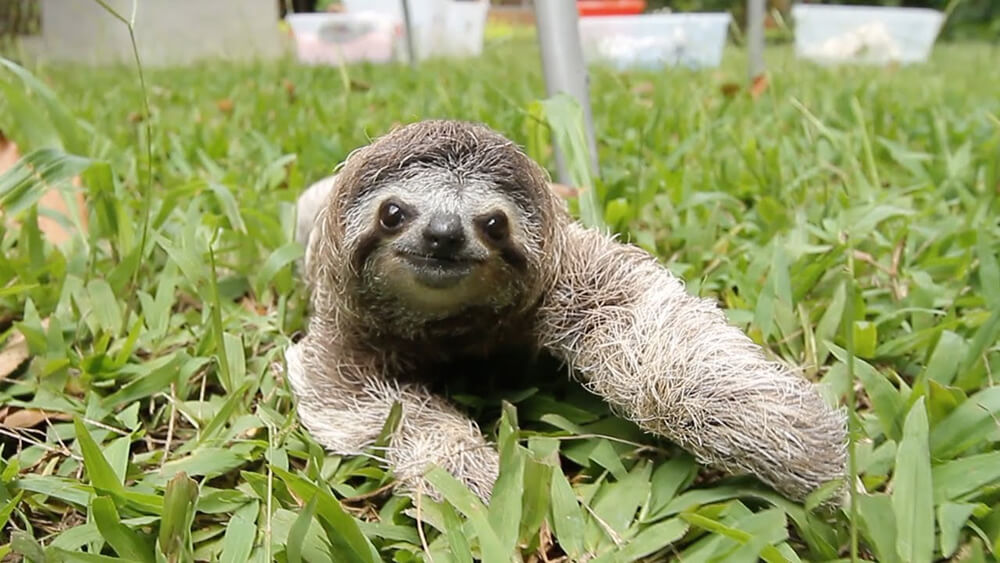
Sloths are an incredibly cute and "chill" tree-dwelling mammal that can be found in the jungles of Central and South America. Although they are medium-sized mammals, skeletons of the current sloth ancestors have hinted that in the past some sloths may have been the size of modern-day elephants! They have a four-part stomach so it can take up to a month for sloths to digest their food and makes them one of the slowest animals in the world. On the ground, they can move just 6.5 feet per minute and 10 feet per minute while in the trees. The average sloth sleeps for over 10 hours a day and can live for over 30 years in captivity.
Flapjack Octopus
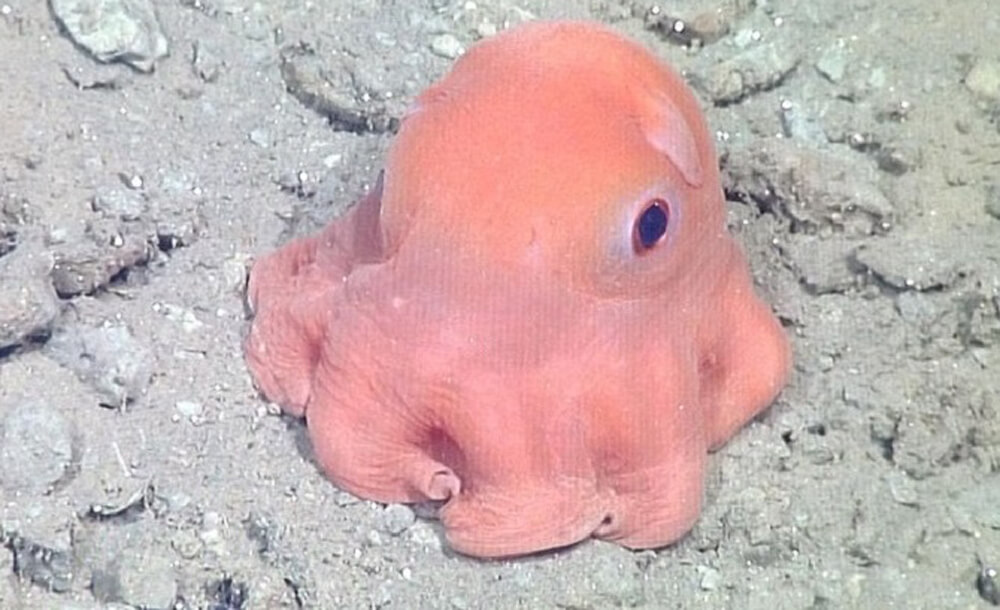
The flapjack octopus is one of the many species of Opisthoteuthis, and possibly the cutest. They are known for living in places with very limited light, yet smaller fish must be present as a food source. Although they are known to float around, they prefer to stay close to the ground where they can rest and remain inconspicuous. Surprisingly enough, the flapjack jellyfish became widely known and popularized after the release of the movie Finding Nemo with the character "Pearl." Their colors can range from being transparent to a dark red. After reproducing, they can lay up to 400 eggs at a time!
Pygmy Hippopotamus
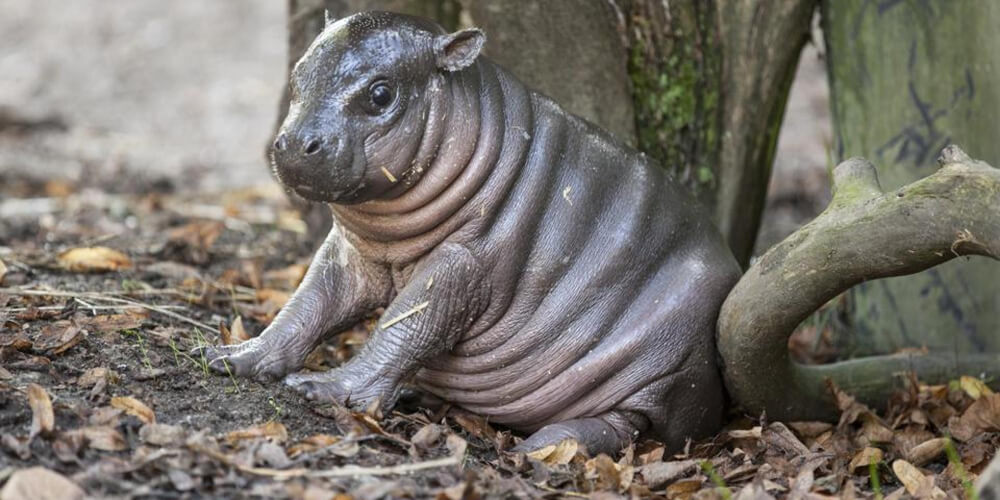
We don't think that anyone would mind seeing this little guy swimming around in their pool. The pygmy hippopotamus is a medium-sized herbivorous mammal that lives in the swamps of West Africa. It is much smaller than its relatives and weighs only about a fifth of the weight with a narrower mouth and sleeker body. They are also more sociable than the common hippopotamus and do not live in herds but in solitary. Their webbed feet help them swim through the swamps and they are even able to run up to 30 miles per hour. Since ancient Egyptian times humans have been fascinated by this shy and elusive hippo, yet unfortunately, we have taken advantage of them and poached them for their meat and teeth.
You won't want to miss the marmosets coming up soon!
Meerkats
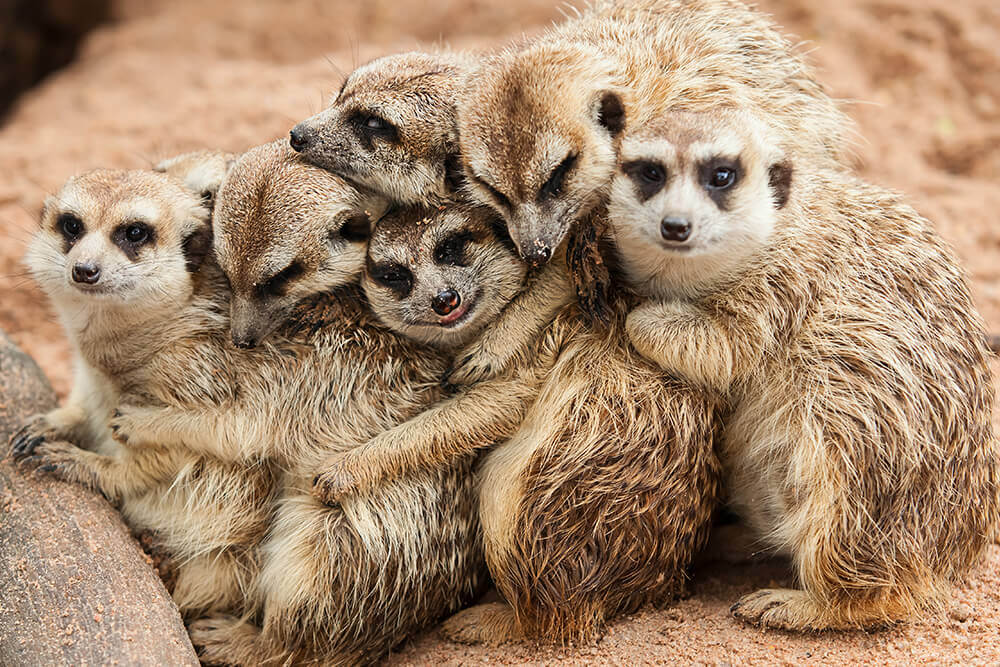
Photo Credits: San Diego Zoo Animals
Meerkats are delightful omnivores that work as a team to survive in the harsh conditions of the Kalahari Desert. They live in groups of 20 to 50 extended family members and use a complex system of underground tunnels for both living and travel. These groups are called gangs and are run by an alpha pair in which the female is the most dominant. The older meerkats are known to risk their own lives in order to protect their young to carry on the social unit. Meerkats are around one foot long and will stand on its hind legs as a lookout for predators or other danger. They let out a distinctive sound in order to warn the others to run into the tunnels.
Hedgehogs
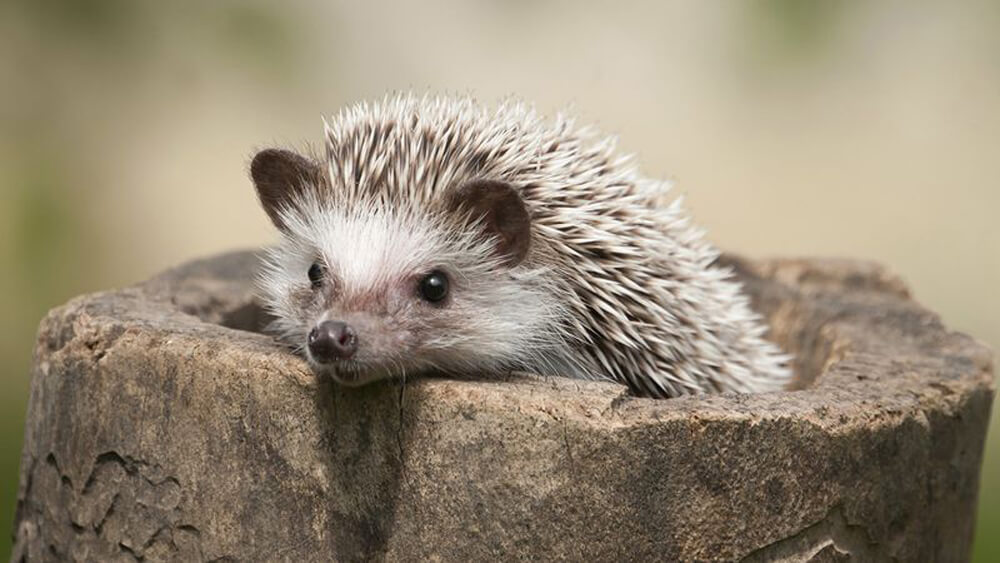
Simply put, hedgehogs are adorable. Unfortunately, in the United States, hedgehog are illegal to own in California, Maine, Arizona, Georgia, Pennsylvania, Hawaii and New York City since they still qualify as wild animals. There are 17 different species of hedgehogs, yet none of them are native to America. Containing between 5,000 to 7,000 non-toxic quills, they puff up when threatened which can be quite painful. They rely mostly on their sense of smell and hearing because their eyesight is so bad, which is good for their nocturnal lifestyle. A group of hedgehogs is known as an "array" and although some can hibernate, not all of them can.
Marmosets
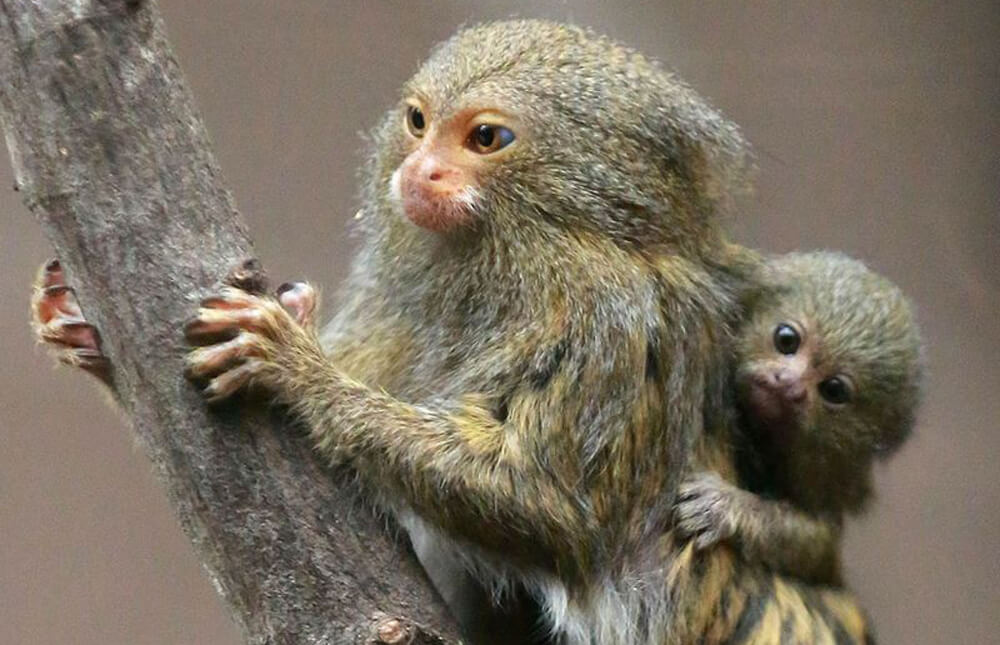
Marmosets are small monkeys that reside high up in the canopies of South African rainforests. There are over 20 different species, and for the most part, all could fit in the palm of a human hand. Although their tails are used for balance, unlike other monkeys, they can't be used to hold onto things. They are considered to be the most primitive primates with their hands and feet resembling squirrels more than anything else. They are active during the day and live in "troops" made up of around four to 15 relatives. They are omnivorous and eat a variety of insects, fruit, tree sap, and other small animals. They can be known to live over 16 years old in the wild.
Koalas
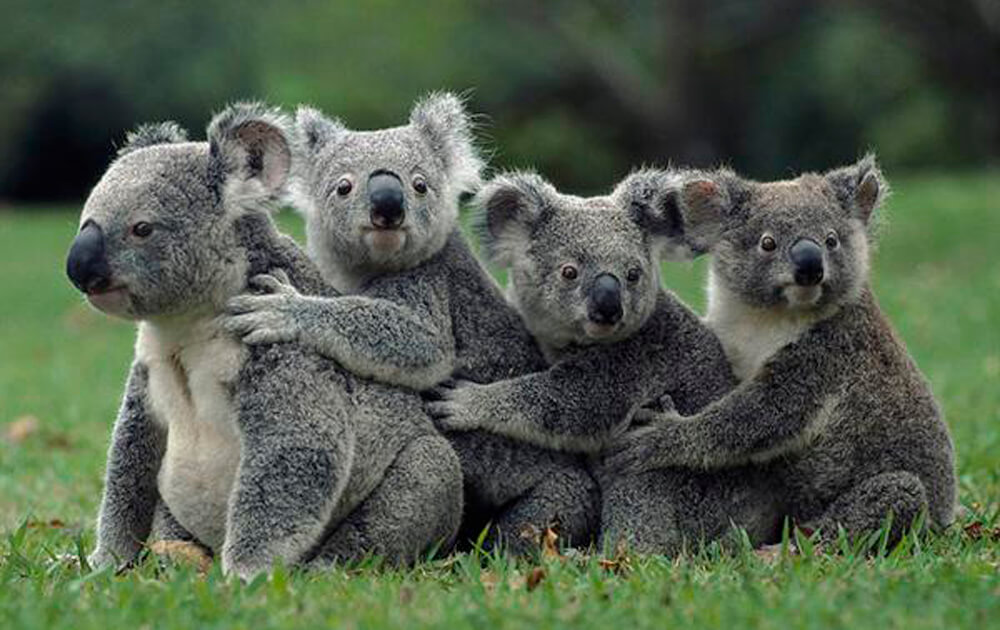
Contrary to popular belief, koalas are not bears but marsupials. This means they are born immature and are called "Joeys," then continue to develop in the comfort and safety of their mother's pouch. On their front paws, koalas have five digits two of which are opposed. On the hind paw, the second and third digits are infused together and used as a grooming claw. Sleeping up to 20 hours a day, koalas are mostly nocturnal, however, they are known to move about during the day sometimes as well. They can be found off the mainland of Eastern Australia, Queensland, Victoria, and South Australia. At the moment, habitat loss is a huge threat to koalas due to the clearing of the eucalyptus trees where they live.
Chameleons
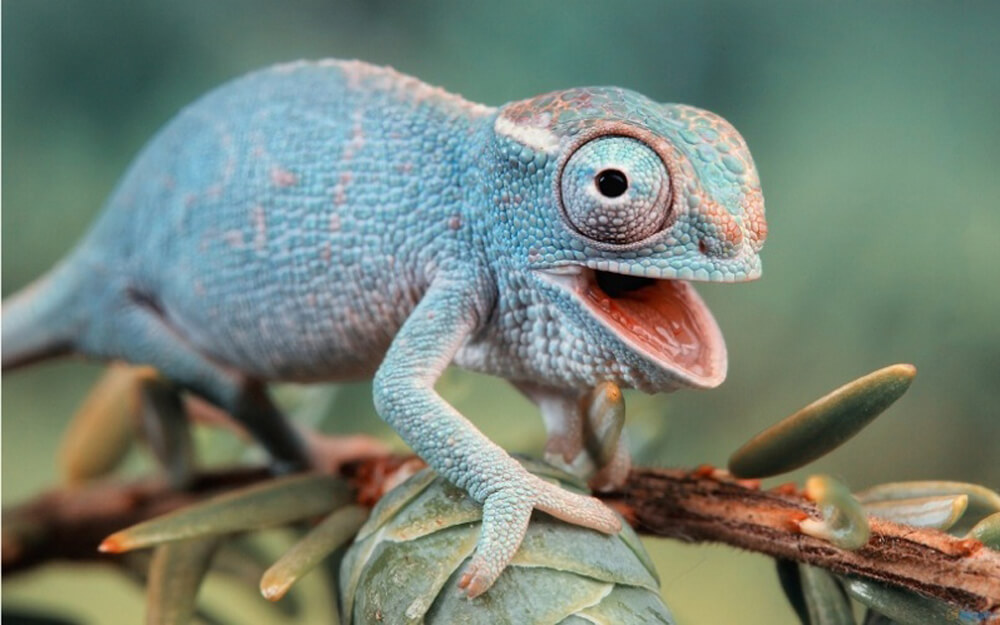
Being a part of the iguana suborder, chameleons are one of the few creatures in the animal kingdom that can change their skin color. They tend to live in Madagascar, Africa, Spain, Portugal, and Asia in the rainforests and other similar climates. There are 171 different species of chameleons ranging in all different sizes The can grow up to 27 inches long, and the smallest is able to fit on the tip of a match. Chameleons change color not only as a form of camouflage but also as a form of communication. Another interesting fact is that chameleons can move their eyes independently, granting them 360-degree vision and can enlarge them when necessary. This, along with their rapid tongues reach over twice their body length, which makes eating insects and birds easier for this rather slow reptile.
Click forward to see why bats are misunderstood!
Fruit Bats
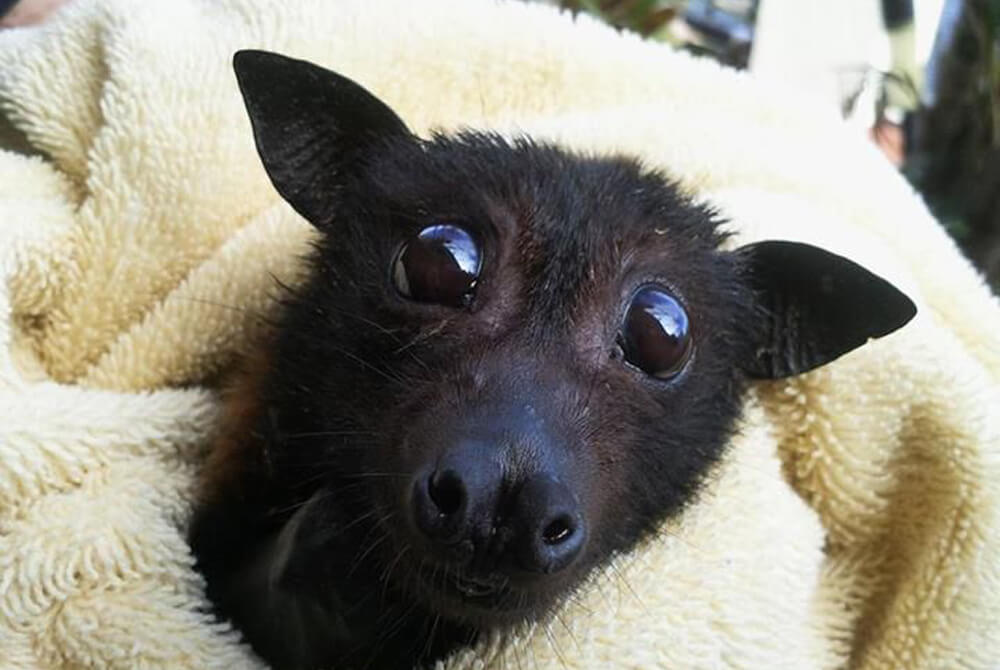
Although sometimes given a bad rap, fruit bats are incredibly misunderstood creatures. In some locations, fruit bats have even been given the nickname flying foxes, for obvious reasons. As understood by their name, these bats have a taste for fruit and not human blood. Some fruit bats are just two inches long while others can grow as much as 16 inches long. Unlike other bats, the fruit bat has excellent vision due to their abnormally large eyes. They use their sharp teeth to peel fruit and keep their tongue tucked away around their rib cage when they aren't eating. Besides flying, fruit bats also use their wings to stay warm while roosting and can be seen roosting in large colonies.
Arctic Foxes
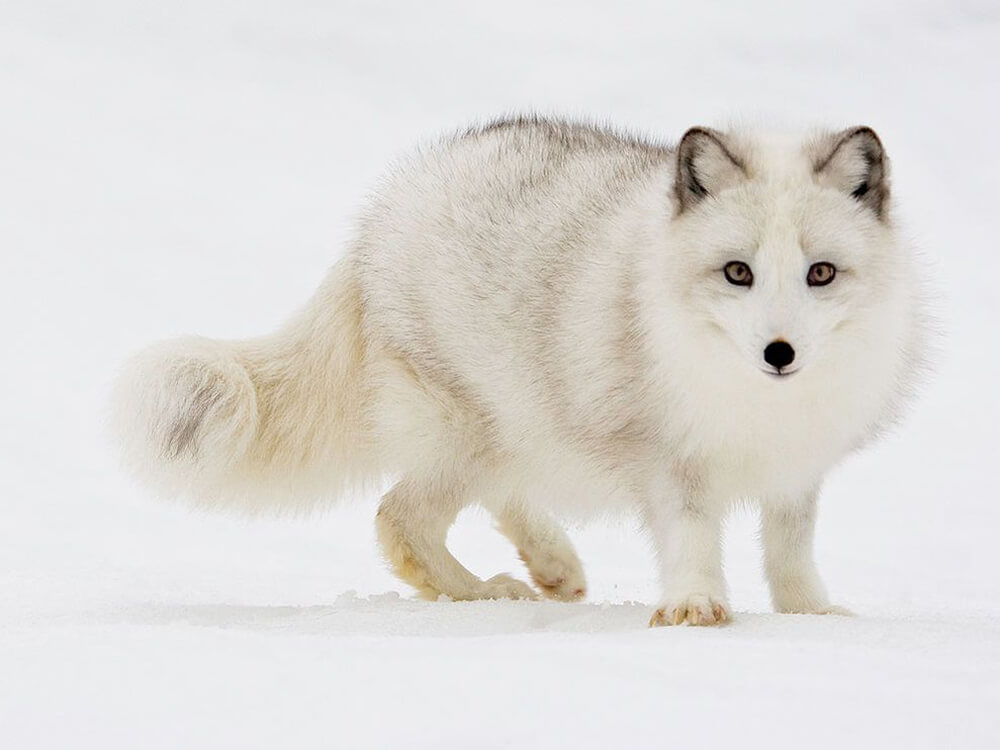
It's not surprising that the Arctic fox inhabits areas of the Arctic. Their thick fur and small and compact build allow them to maintain their body temperature by reducing their surface area. They have the thickest fur of any animal in the Arctic and are solitary for the most part. They are the smallest member of the canine family being about the size of a house cat. Despite living in the Arctic, these foxes don't hibernate, and their fur color even changes with the seasons to be white in the winter and brown and grey in the summer. The Arctic fox is known for being monogamous and in order to feed themselves all well as their pups, they follow in the steps of larger predators to eat the scraps of a kill.
Northern-Pygmy Owl
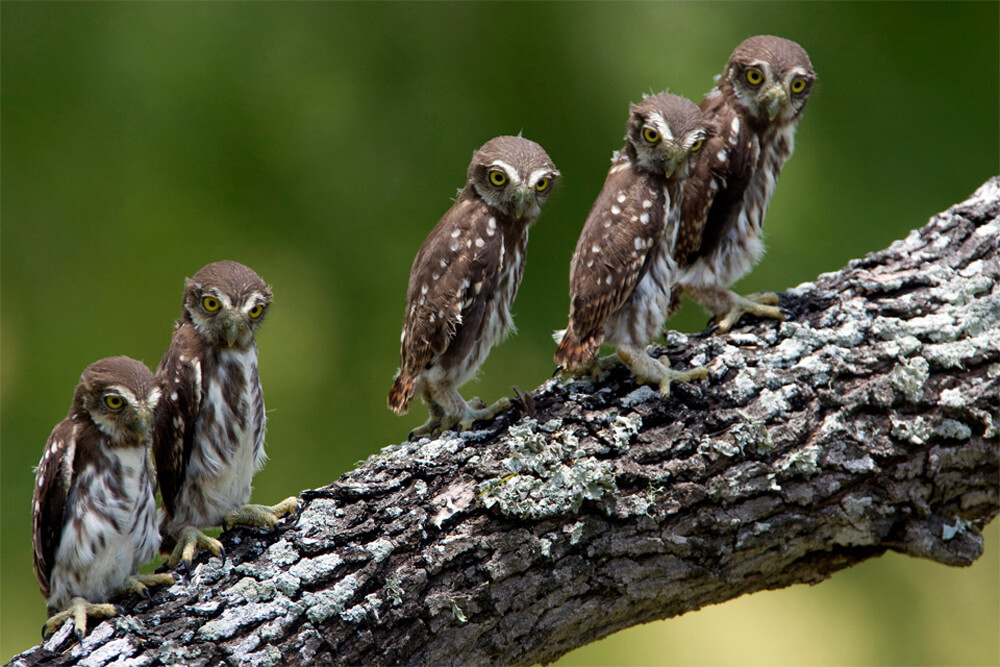
The Northern-Pygmy Owl is a small owl that is often mistaken for a pigeon. They live in the forest and mostly reside along the tops of the tree line. They can be mostly found in the Rocky Mountain region, areas of North America, British Columbia, and even in Alaska. They are a skittish bird and try their best to stay away from humans and other living things. Although small, they are extremely aggressive and are more likely to attack rather than fly away and have even been known to attack humans. They puff out their chests to make themselves appear much larger than they are and make a distinct voice at night to make their presence known. Their prey can be over three times their size and rely on patients rather than stealth to kill. Don't let their cuteness fool you!
Sugar Glider
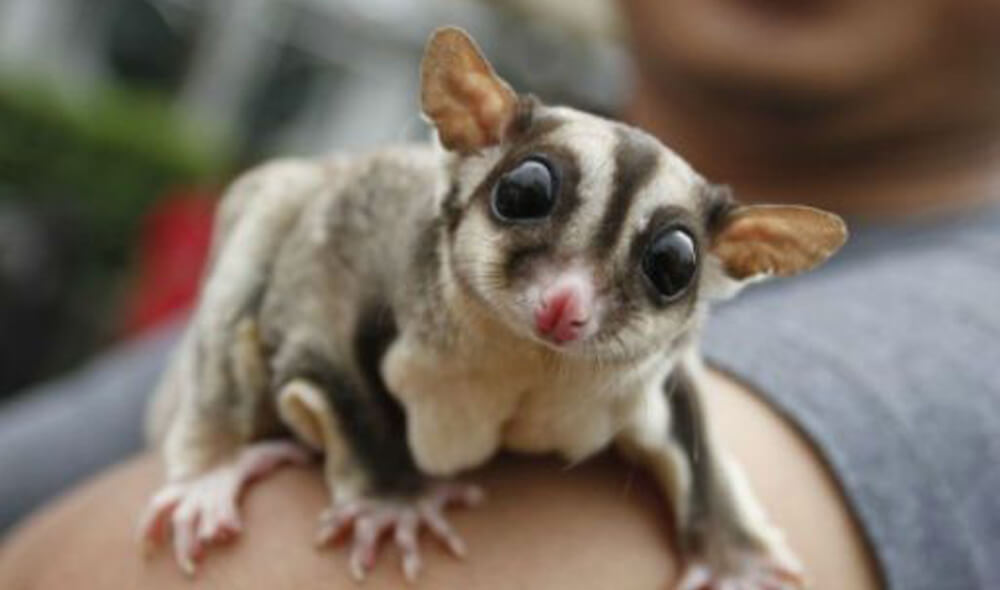
if you like adorable little creatures that can fly, then you're going to love sugar gliders. These guys are a marsupial that lives in Australia and New Guinea. They travel from tree to tree using their excess skin membrane as a kind of wing that allows them to gracefully glide. Usually weighing just under a pound, they are small with big black eyes, and stripe that starts at the bridge of their nose and goes down along their back. They have five digits on each foot with one opposable toe allowing it to grab onto branches with ease. They have a liking for sweet foods such as gum, sap, and nectar from trees and sometimes insects. They are social animals and are even permitted as pets in most parts of the United States.
Ferrets
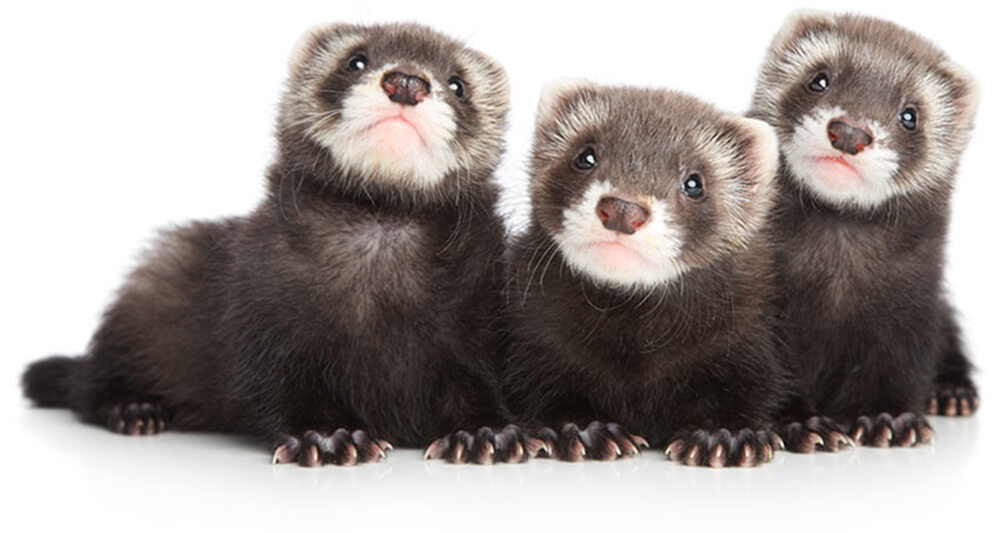
Ferrets are a carnivorous mammal in the weasel family. They are known to be adventurous and curious little critters that can get themselves into trouble. Ferrets can sleep for up to 18 hours a day and have even become the third most popular pet in the United States behind cats and dogs. Ferrets do not occur naturally in the wild as they were domesticated for hunting purposes. A group of ferrets is known as a "business" but chances are that you don't want to have a business of ferrets wandering around your house. They get easily bored and hide things as it is part of their natural instinct.
Emperor Taramin
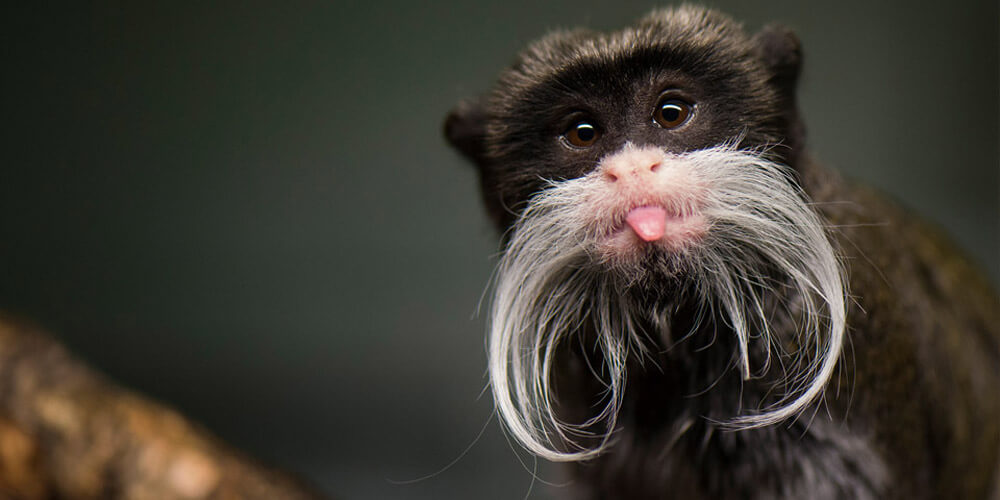
Photo Credits: Adelaide Zoo
These little-bearded monkeys can be found in the forests of South America. It was named due to its elegant mustache which was thought to resemble that of the German emperor Wilhelm II at the time. This monkey is most active during the day and seeks refuge at the tops of the trees at night. They are incredibly social and their troops are usually led by the eldest female members although the group is usually predominantly male. Fostering their newborns is a family affair and even older siblings are expected to carry and groom the babies. They eat both plants and animals to survive such as plants fruits, reptiles, eggs, and small animals. Thankfully, these monkeys aren't in imminent danger of extinction but their population is declining due to deforestation.
Spider Monkey
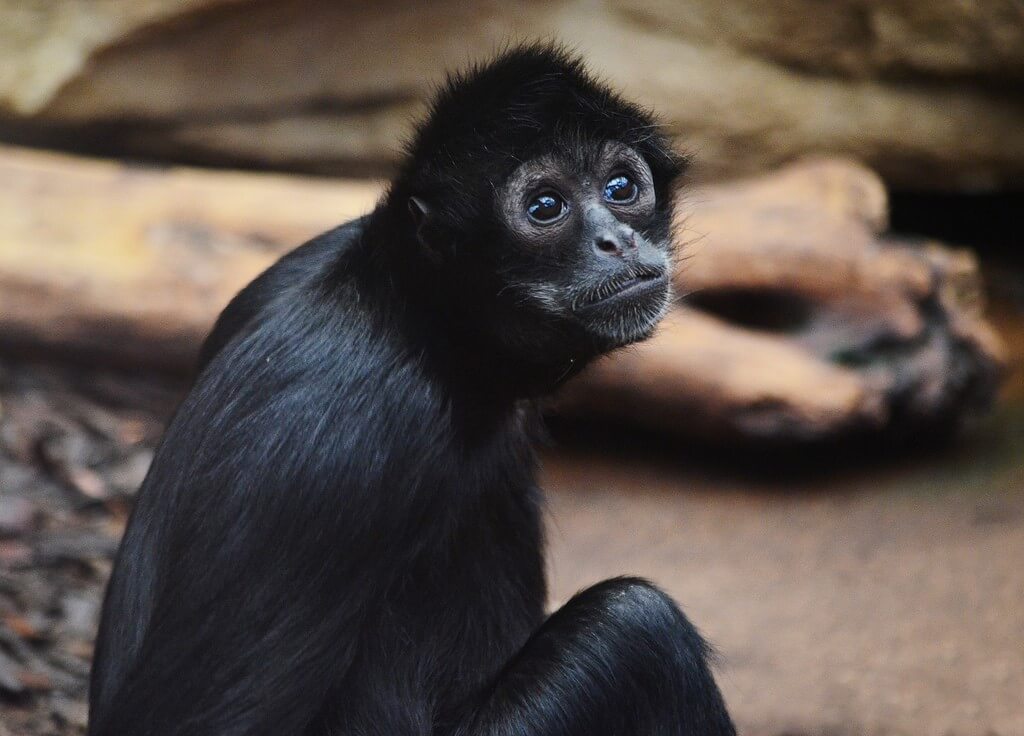
Native to Central and South America, Spider Monkeys are widely regarded as the most intelligent monkeys in the new world. A Spider Monkey2019s diet consists of mostly fruit but they will also eat leaves, flowers, nuts, bird eggs, and spiders on occasion. The Spider Monkey gets its name from its long disproportionate limbs resembling the frame of a spider. Spider Monkeys have an average lifespan of about 22 years and are very social animals. They typically live in groups of anywhere between 15 to 25 monkeys. Spider Monkeys are also quite skilled with their tails and when traveling through the treetops, they can use their tails like a fifth limb!
Ad00e9lie Penguin
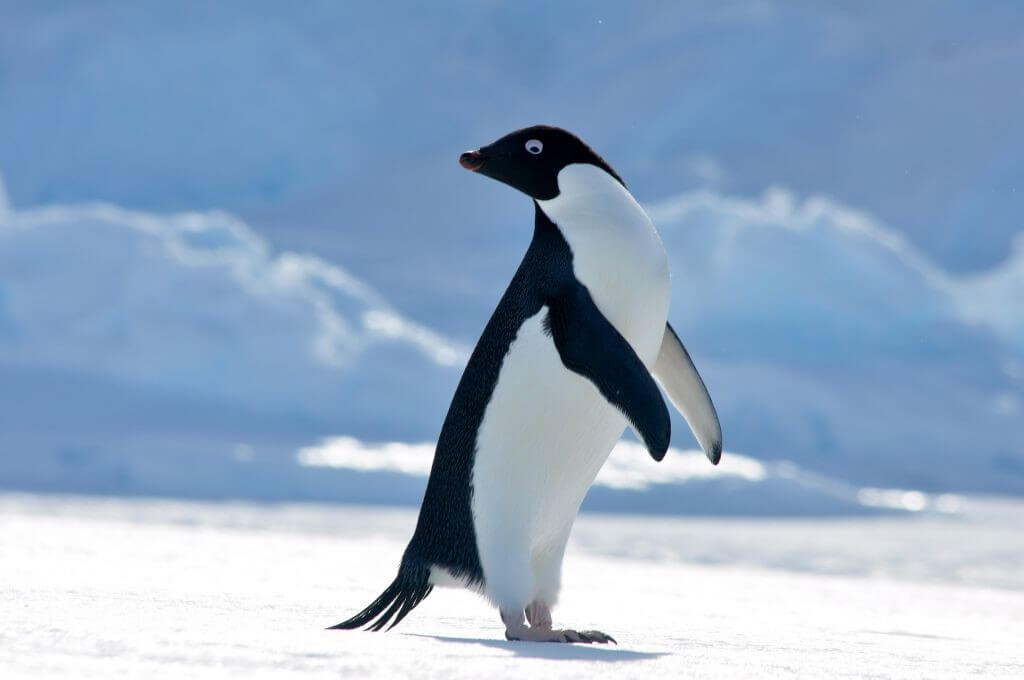
Named after Ad00e8le Dumont D'Urville (the wife of French explorer Jules Dumont d'Urville), the Ad00e9lie Penguin2019s diet consists of various seafood including multiple types of krill, squid and Antarctic silverfish. During breeding season, Ad00e9lie Penguins form large communities of penguins that can consist of thousands of members. During breeding season, each penguin mother will typically lay two eggs and the mother and father will take turns sitting on the eggs and walking to the sea to feed. The Ad00e9lie Penguin isn2019t alone in Antarctica and still has a host of predators to look out for, such as Orca, leopard seals, and predatory birds.
Atlantic Puffin
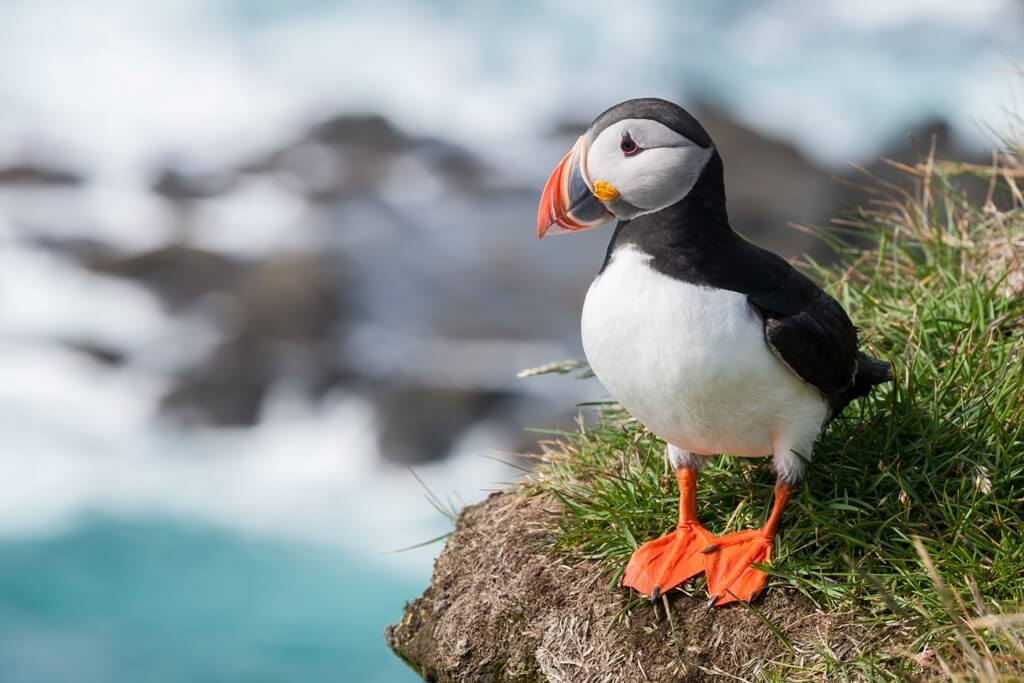
Standing at about eight inches high, the Atlantic puffin is a small seabird native to the Atlantic Ocean. Most of the Atlantic puffin2019s time is spent out at sea in the wide open ocean. As they spend so much time in the ocean, the Atlantic puffin feeds on mostly fish but will also eat shrimp and other crustaceans it manages to find. Like several other seabirds for that matter, the Atlantic puffin has a white bottom with a black top and loves floating in the water. This design helps the bird by making it hard for predators to spot it from both above and below depending on how the bird is being looked at in the ocean.
Dwarf Seahorse
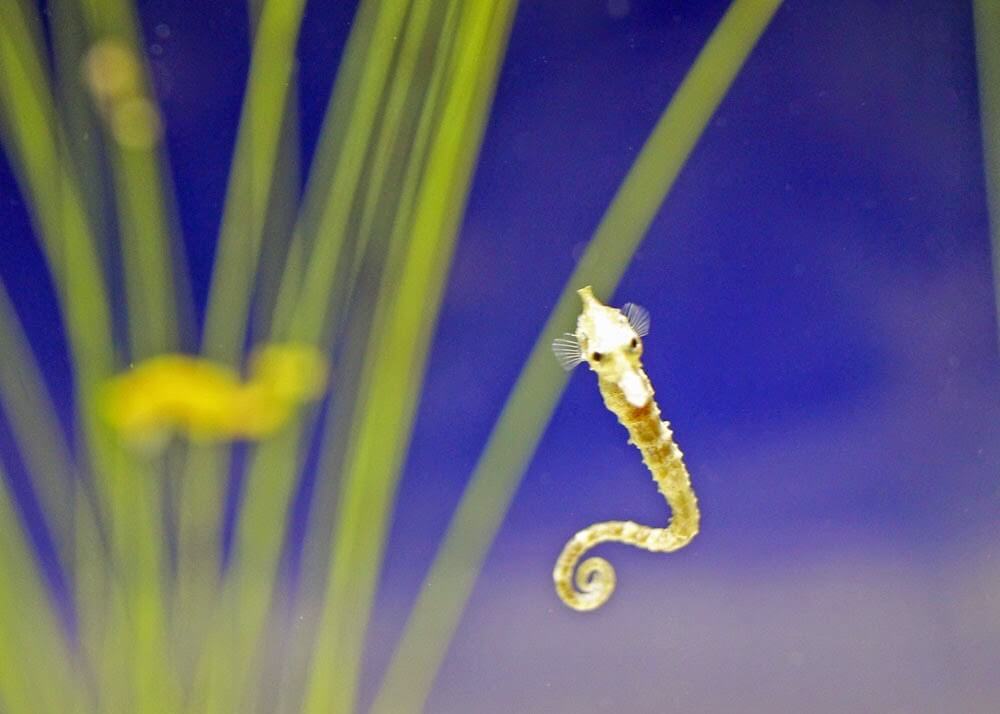
As one of nature2019s tiniest creatures, the conservation status of the dwarf seahorse is currently unknown as it is extremely difficult to track. Found in aquatic beds in the United States and the Bahamas, the dwarf seahorse currently holds the Guinness World Record for slowest moving fish at an exhilarating speed of five feet per hour. At an average length of only one inch, the dwarf seahorse definitely earns its name. As the dwarf seahorse is a predator that hunts by waiting for its prey to swim by, the ability to change colors is without a doubt a useful adaptation.
Ocelot
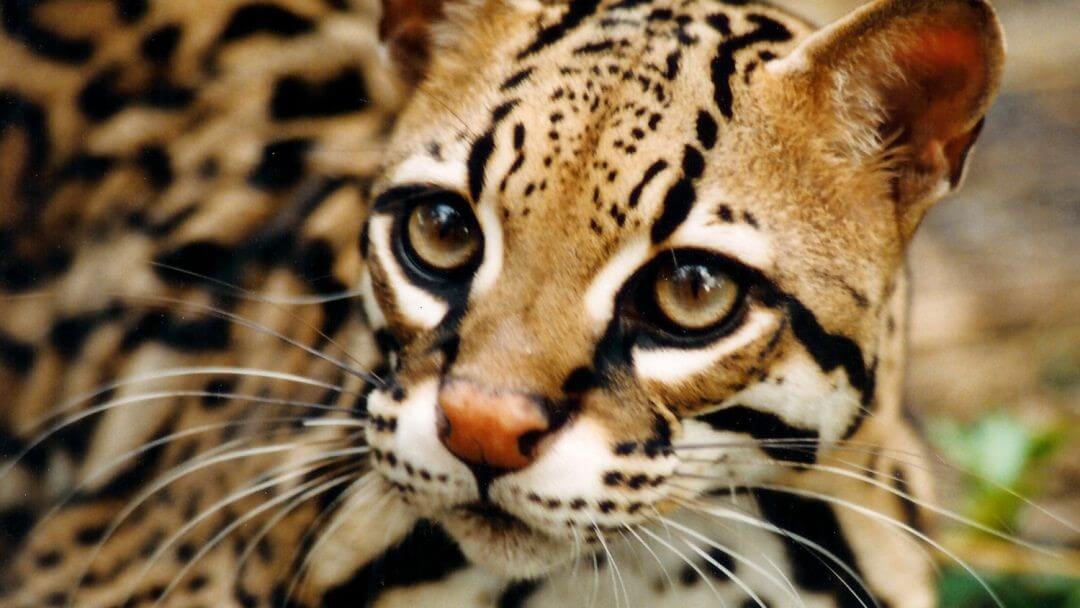
The Ocelot is a nocturnal medium-sized cat native to the Americas and the Caribbean. The average size of an Ocelot is anywhere between 22 and 39 inches with an average weight of 18 to 35 pounds. Ocelots spend most of their time awake hunting and although Ocelots mainly hunt at night, every now and then an Ocelot may be seen hunting during the day. Typically though, Ocelots tend to rest in trees during the day and hunt armadillos, rabbits, birds, opossums, fish, primates or reptiles at night. As cute as the Ocelot is, people have occasionally kept them as pets but this is ill-advised as Ocelots are still wild animals!
Quokka
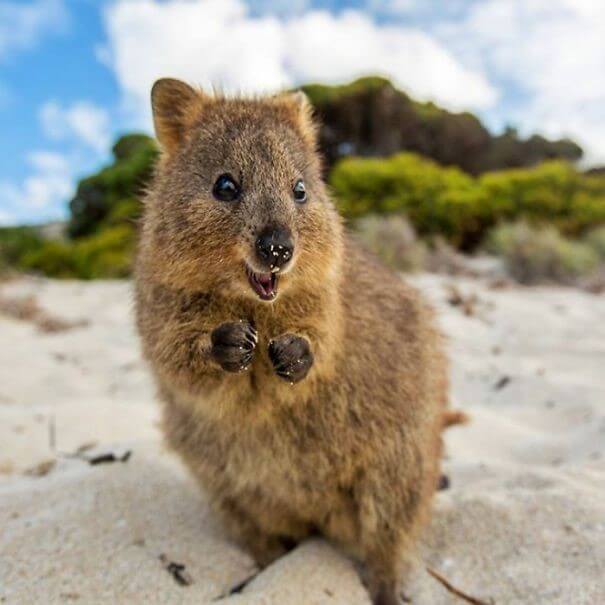
The Quokka can be found in the southwest region of Australia and on a few small islands off the coast of West Australia. They are members of the Marsupial and Macropod family of species. Weighing between 5.5 to 11 pounds, The Quokka size is equal to that of a small domestic cat. Despite its relatively short arm length, the Quokka can climb trees and is a dedicated herbivore. Although it may appear that Quokkas don2019t need much water to survive, Quokkas manage to stay hydrated through the food that they eat. In areas where they may interact with tourist, it is strongly encouraged not to feed them because of the high health risk outside food may pose to their health.
Hummingbirds
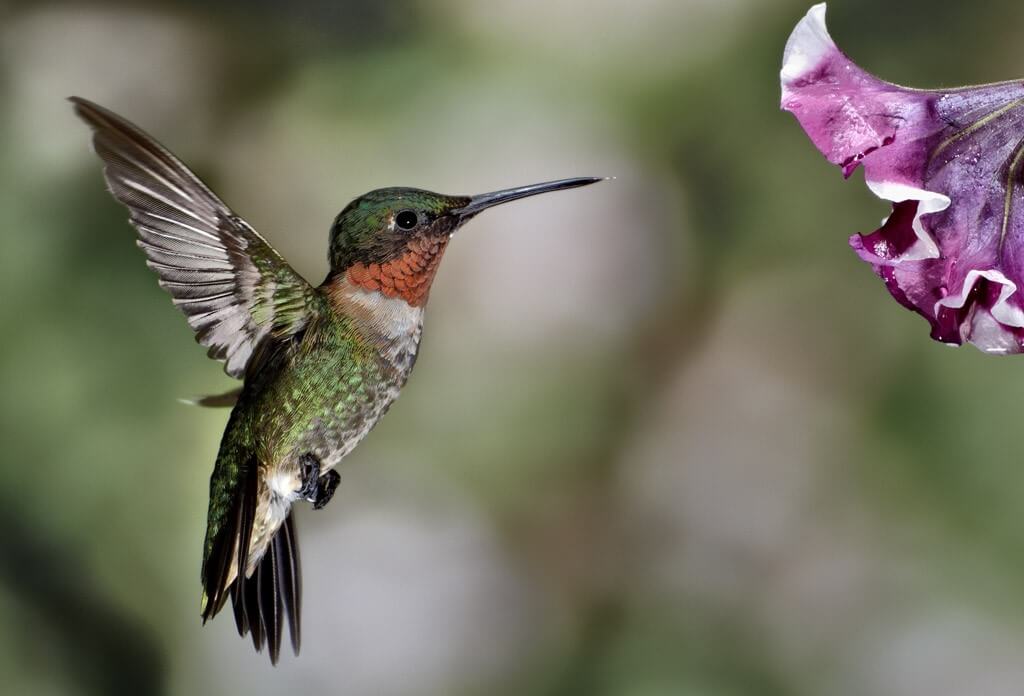
Hummingbirds come in a variety of colors and sizes but are known for the trademark sound their wings make as they flap their wings. Depending on the species of hummingbird, the number of beats a hummingbird makes with it wing can range from 12 beats per second to 80. With extremely high metabolisms, hummingbirds must constantly eat or preserve themselves by slowing down their metabolic rate. They spend most of their time during the day resting because of the high demands flying puts on their bodies. Hummingbirds eat insects and drink nectar as a source of fuel. The lifespan of a hummingbird ranges from 3 to 5 years.
Bottlenose dolphin
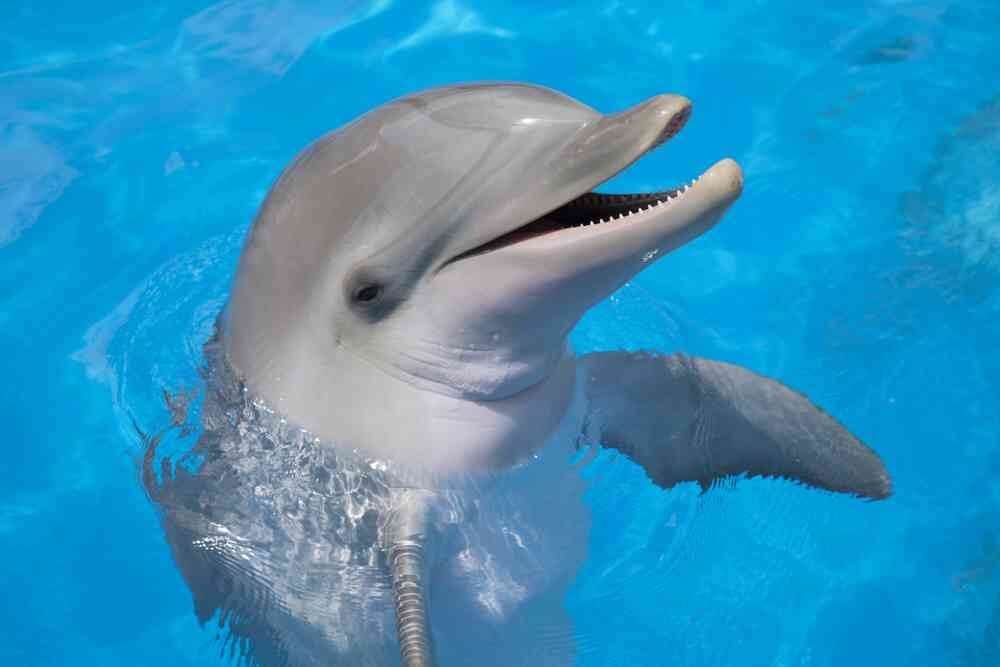
Bottlenose Dolphins are found all throughout the ocean worldwide, with the exception of the coldest of waters. They are social creatures and can live occasionally live by themselves, but on the other end of the spectrum, Bottlenose Dolphins can also live in groups of more than 1,000. These Dolphins are very intelligent and are known to possess both high levels of emotional and intellectual intelligence. They are capable of using sound to communicate, have been seen using tools, and are capable of recognizing themselves in front of a mirror. Bottlenose Dolphins primarily feed on fish, squid and small crustaceans. They may hunt alone or as a team to corner their prey.
Wombat
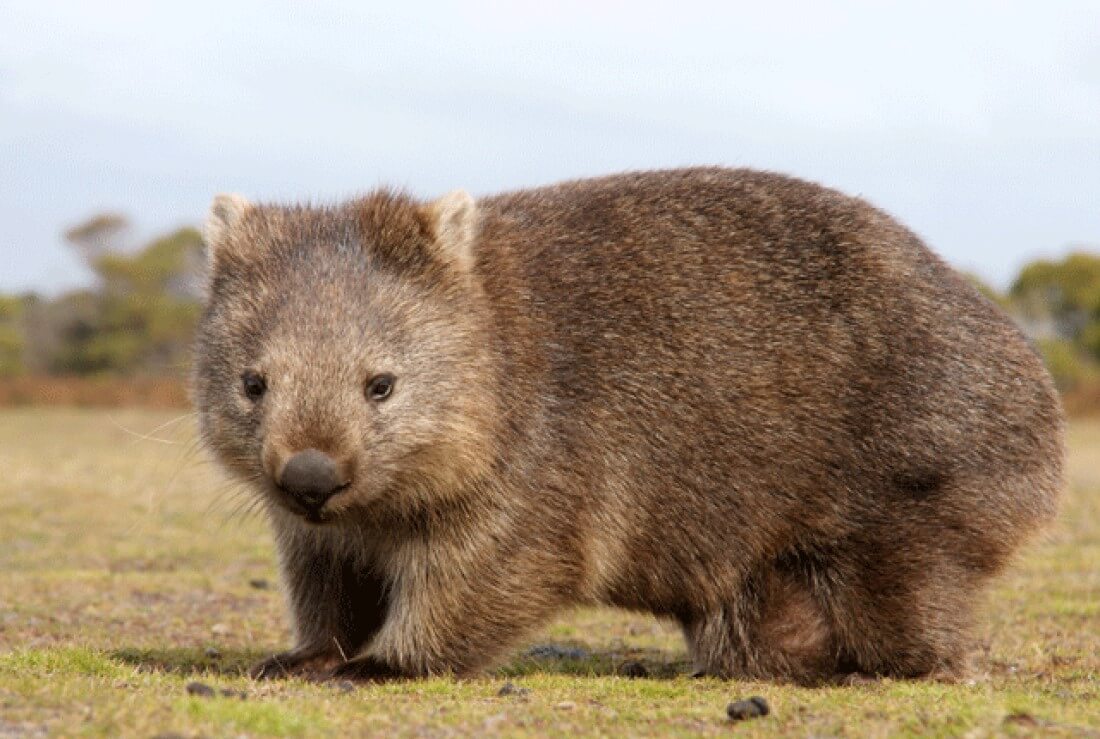
Native to Australia, the Wombat can run at speed of up to 25 miles per hour. A notable adaptation of this particular Marsupial is that it has a backward facing pouch. This is advantageous because the Wombat is known to dig burrows. For a Joey (young wombat), being tucked in a backward facing pouch helps protect it from getting dirt tossed on top of it. Wombats are herbivores and their diets include herbs, grasses, and roots. The average lifespan of a wild Wombat is about 15 years, but have been observed to live well past the age of 30 in captivity.
Jumping Spider
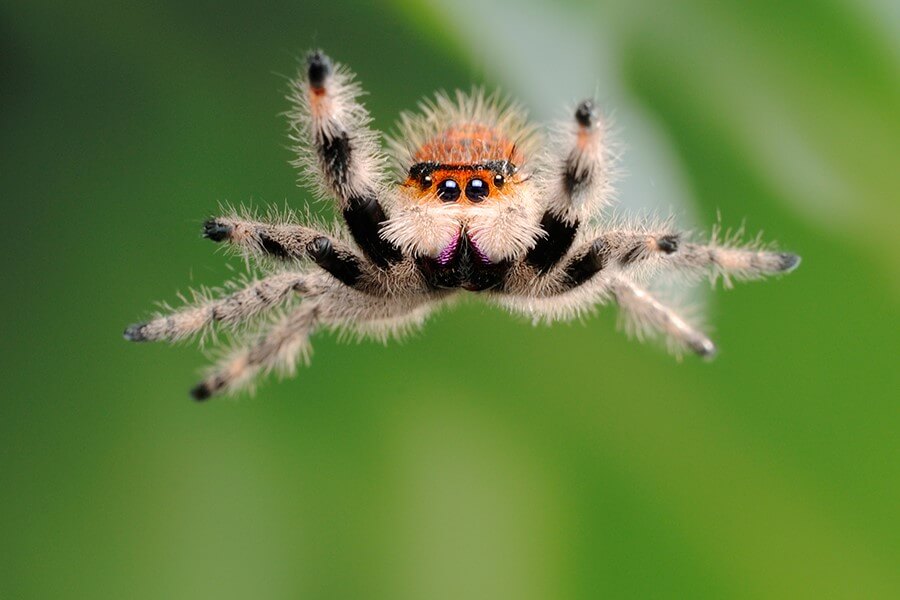
As the only spider on any list regarding cuteness, Jumping spiders defiantly set themselves apart from the rest! They are known for their ability to leap on their prey by managing the flow of blood in their bodies. They hunt during the day and analyze and stalk their prey before eventually closing the hunt by leaping on it. This approach to hunting isn2019t textbook for every jump spider and it is worth noting that the hunting tactics of jumping spiders are still being researched. Jumping Spiders have amazing vision and a strange mating ritual has been observed from them, where the male spider performs a dance to attract a female spider.
Beluga Whale
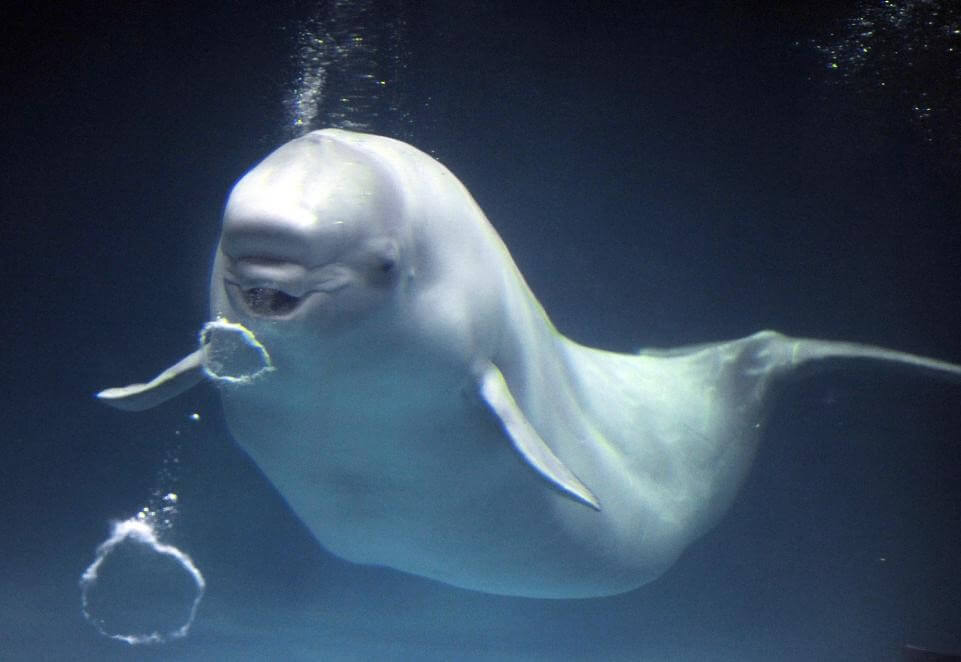
Once considered to be competition for fisherman until the late 1950s, where the unrestricted killing of Beluga whales finally came to an end, the Beluga whale can found in Arctic and Sub Arctic waters of the world. Today, the world population of Beluga Whales is believed to be well over a hundred and fifty thousand. These whales are classified as opportunistic feeders (they eat when the opportunity arises), and their diet ranges from a wide variety of fish, crustaceans, octopus, sandworms, clams, mussels and snails. Like Dolphins, Belugas use sound to communicate and hunt their prey.
Pufferfish
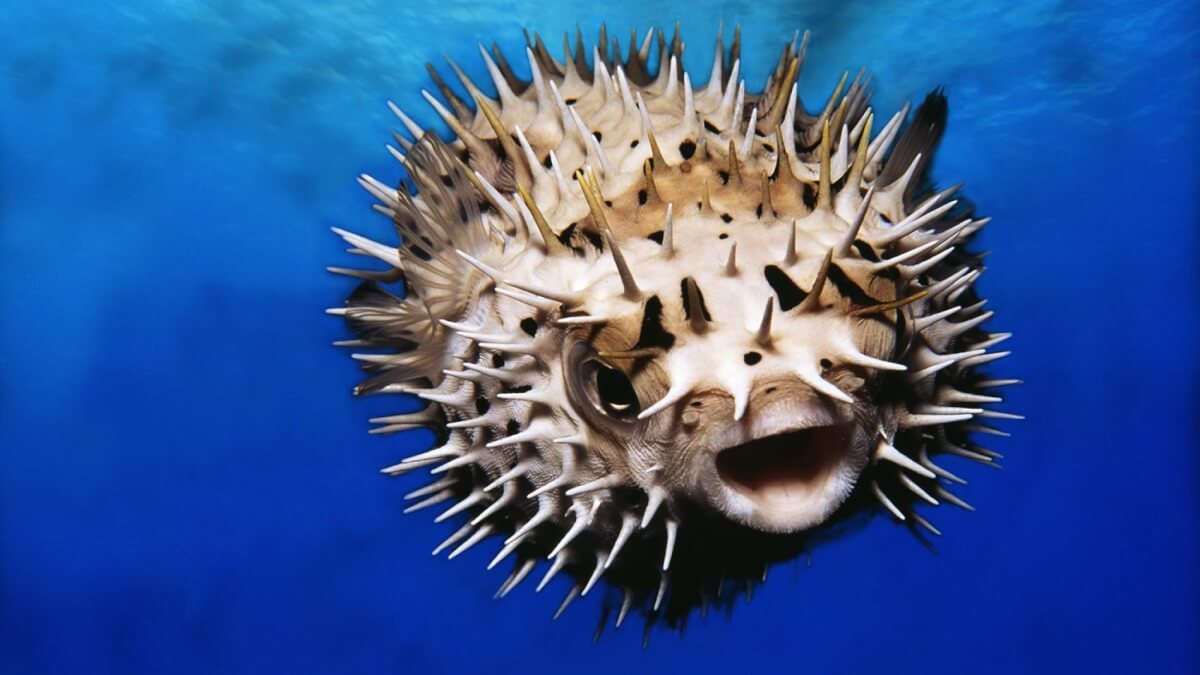
Known as Pufferfish, Bubble fish, Balloonfish, and Blowfish, Pufferfish visibly separate themselves from their cousins the porcupine fish by having spines that are only visible when they are inflated. Although Pufferfish may be cute, touching one is ill-advised as the majority of Pufferfish are toxic. They use their toxic spines as a last resort way to defend themselves from predators. Pufferfish are capable of moving their eyes independent on each other and many Pufferfish can change colors in order to better blend into their environment. The large majority of Pufferfish survive on a diet of Algae and invertebrate.
Snow Leopard
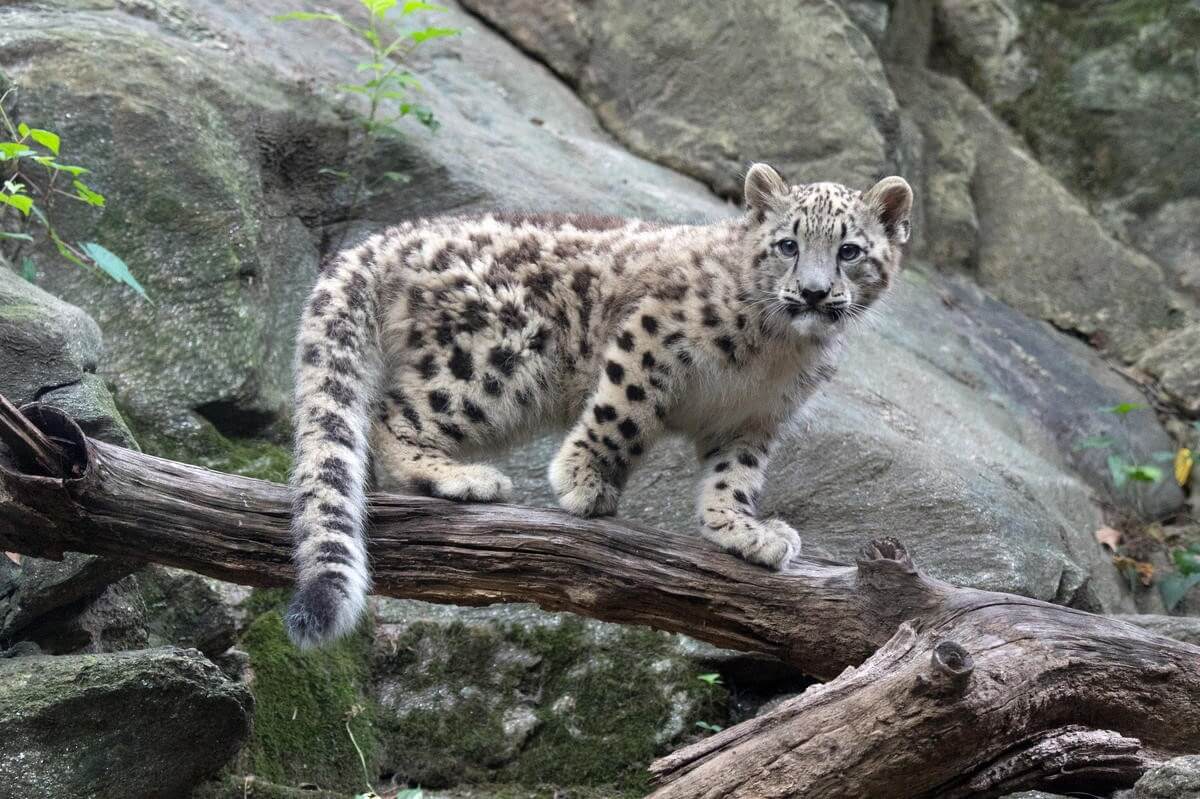
Possessing thick fur to deal with the cold mountainous region of central Asian and wide paws to maneuver through the snow, the snow leopard is well equipped for its challenging environment. The snow leopard's long tail helps it maintain its balance as it walks through the rugged mountain terrain. Snow Leopards are solitary individuals. They are one of the rarest species to be caught on film and the only time a snow Leopard will be seen traveling with another is when it2019s a mother and her young cub. Snow leopards are opportunistic hunters and although they are classified as carnivores, they have been recorded eating significant amounts of vegetation as well.
Kinkajou
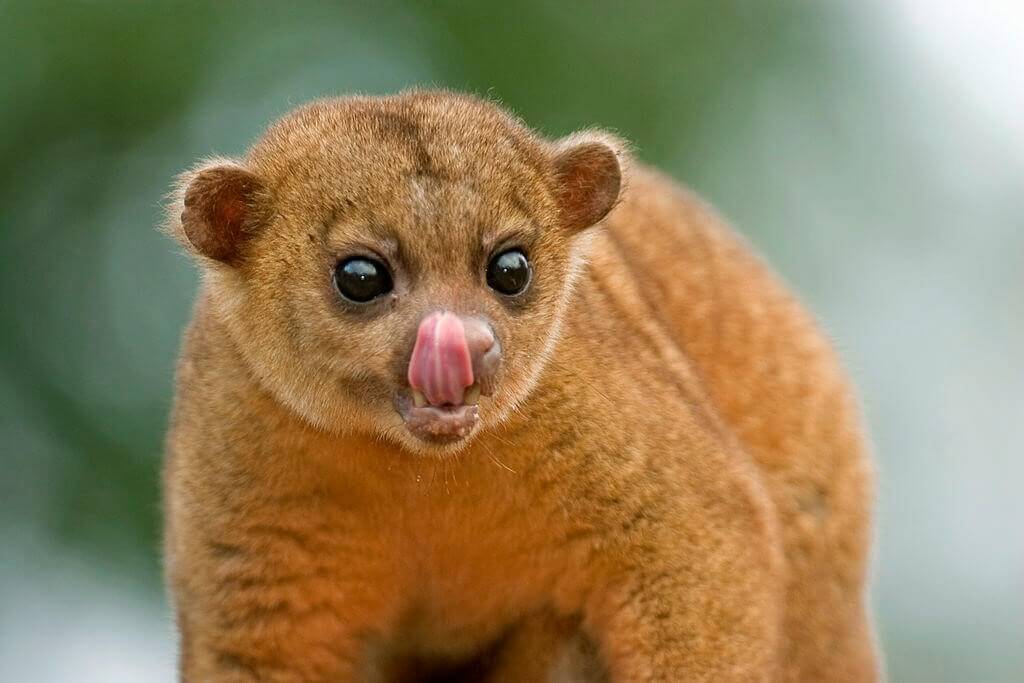
Kinkajous are native to Central America and South America. They may look like cute cousins of a monkey, but they, in fact, reside within the raccoon family of animals. Kinkajous are tree dwellers and similar to spider monkeys, are able to use their tail as a fifth limb in order to navigate the trees. They may also use their tails as somewhat of a blanket. Kinkajous are omnivores with the overwhelming majority of the food consisting of fruit. In some places, people may keep a Kinkajou as an exotic pet and Kinkajous in captivity have lived for 23 years on average with a maximum of 41 years.
Giraffe
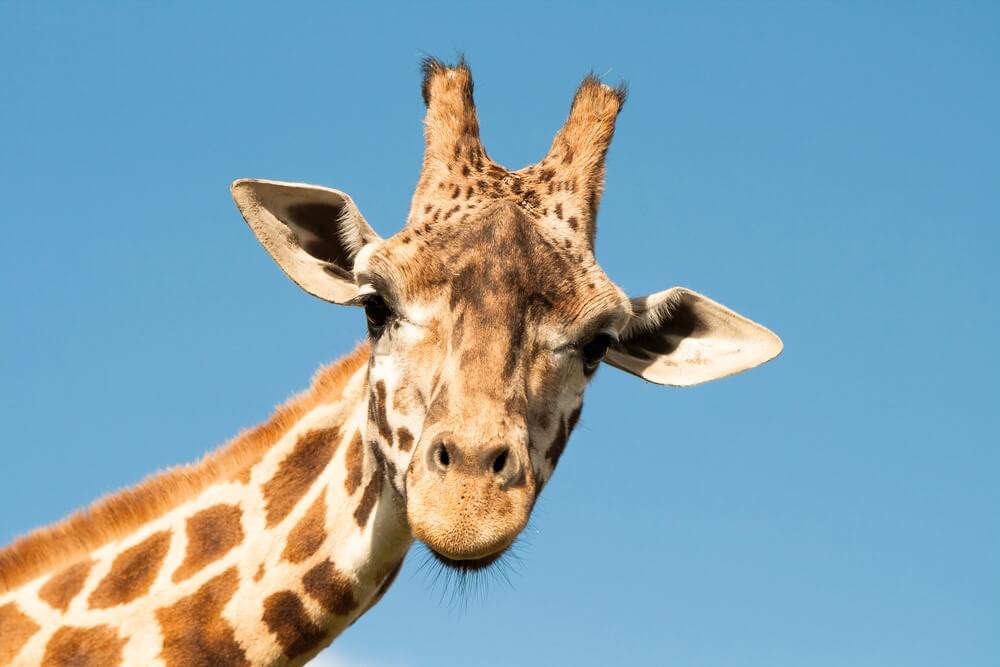
The giraffe is the tallest living land animal ranging from around 16 to 20 feet for males and 15 feet for females. At six feet, A giraffe2019s legs by themselves are pretty high up. A giraffe is capable of running at speeds of over 30 miles per hour for short periods of time. They are native to Africa and use their plentiful height to eat the twigs off trees. Often, giraffes live in fairly big groups and are capable of forming social relationships. In combat, male giraffes use their necks as a weapon to establish dominance over other males by either rubbing or swinging at each other2019s necks.
Axolotl
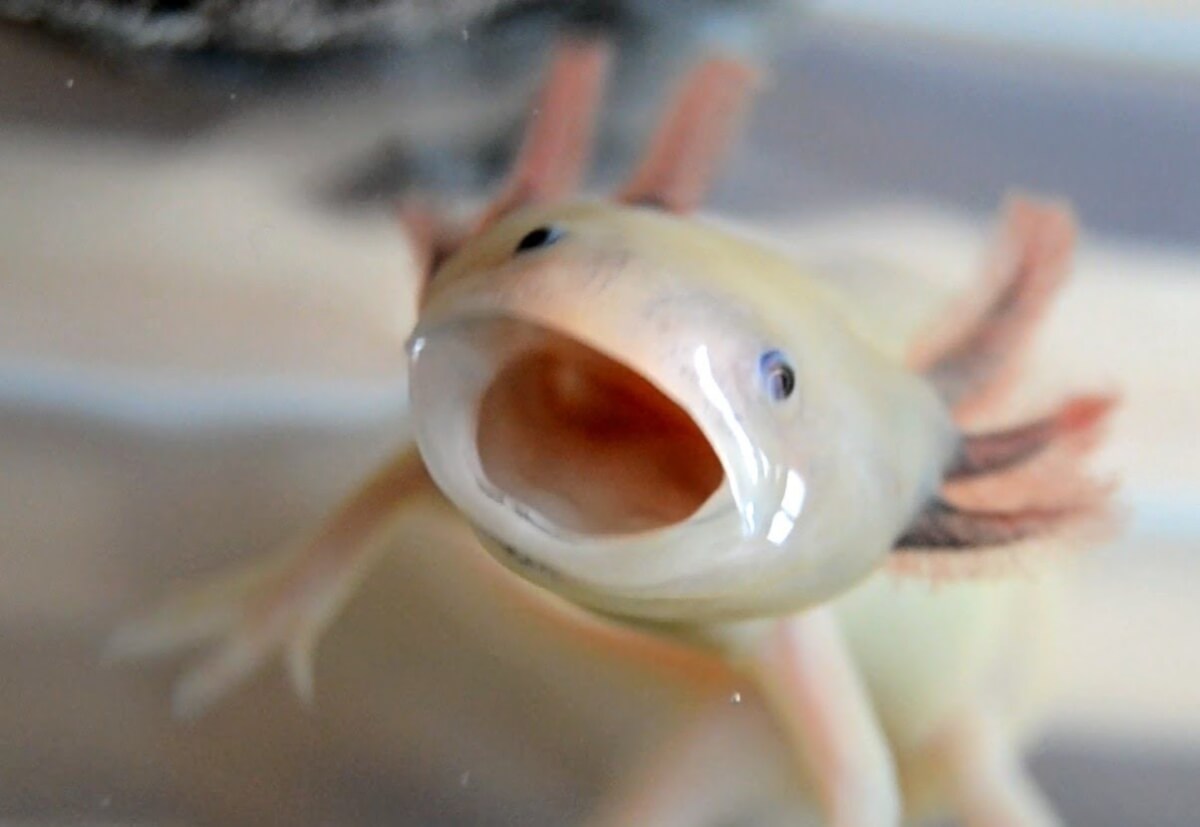
The Axolotl, also known as the Mexican Salamander, is a small salamander that comes from the lakes surrounding Mexico city. Axolotls are amphibians; however, they never undergo the process of metamorphosis which would allow them to transition into land salamanders. Instead, Axolotls keep their cute appearance because they remain in their larval form for the entirety of their lives and thus never grow feet, full teeth, full lungs, and eyelids. They remain in the water in their youth form and eat crustaceans, small fish, and worms. As Axolotls have an extremely limited natural environment and human interference has affected the lifestyles of the Axolotls, wild Axolotls are currently critically endangered.
Red-Eyed Tree Frog
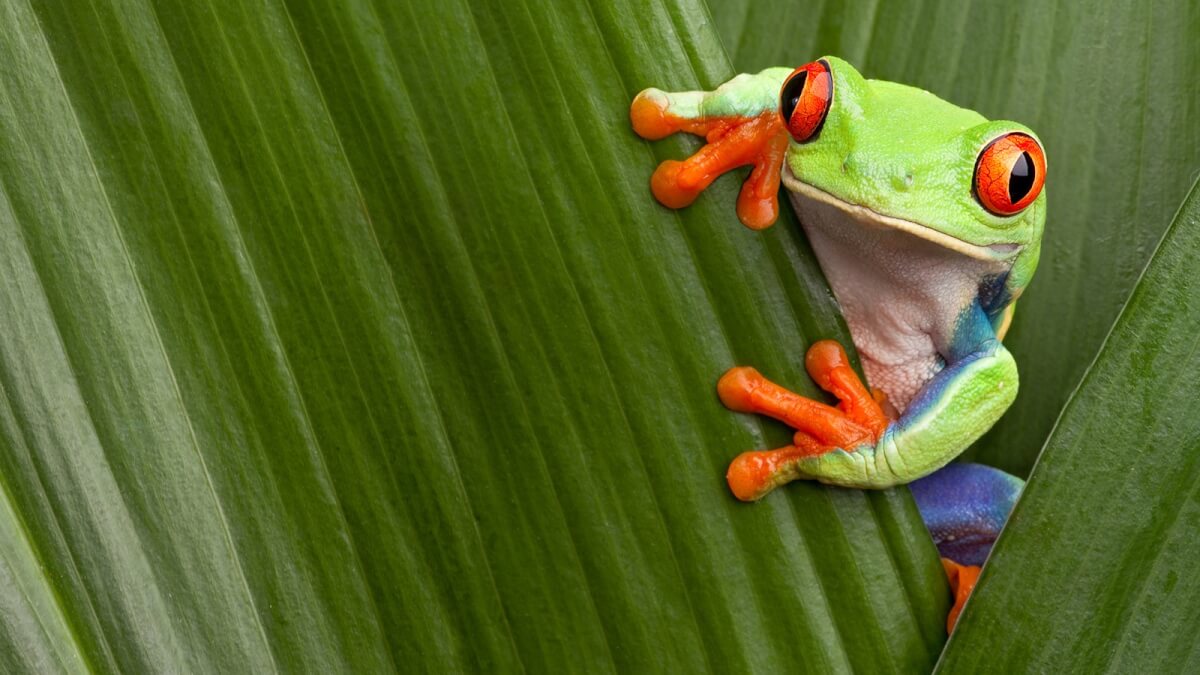
Sometimes kept as a pet, the red-eyedtree frogg is known for its distinct vibrant colors and alarmingly red eyes. As their name implies, these frogs spend the majority of their lives in trees and although their bright colors might imply that they are poisonous, Red-eyed tree frogs aren2019t poisonous and have to use camouflage and the sudden and alarming glare of their red eyes in order to protect themselves. They can be found in the rainforests of Central America near river and they exclusively feast on insects. Red-eyed tree frogs on average live for five years.
Sea Turtle
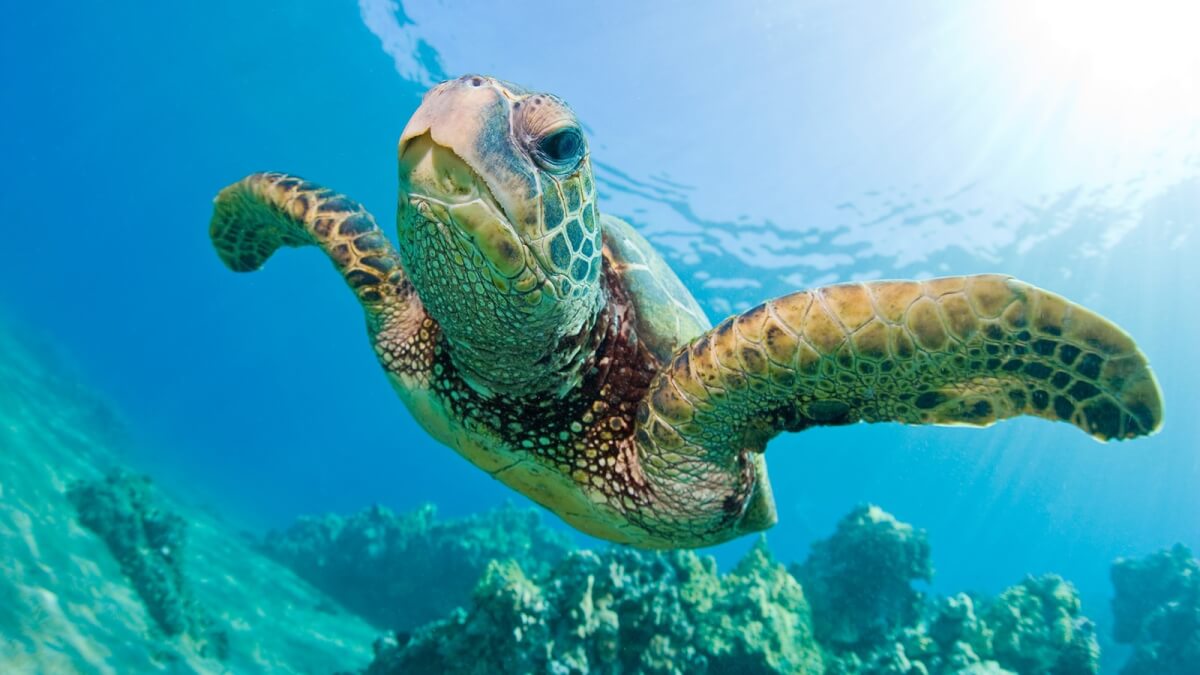
Most species of sea turtle are currently classified as threatened or endangered species. Six out of the seven sea turtle species may not be around in the next 50 years. Sea turtles are facing the loss of feeding sites, destruction of their nesting grounds, and pollution. Most of a sea turtles life is spent out in the ocean but every two to five years depending on the species, a sea turtle might return to shore to lay eggs. Each specific sea turtle species have their own unique diet, that reflects their environment ranging from clams, crustaceans, jellyfish, grass and other small invertebrates.
Ring-Tailed Lemur
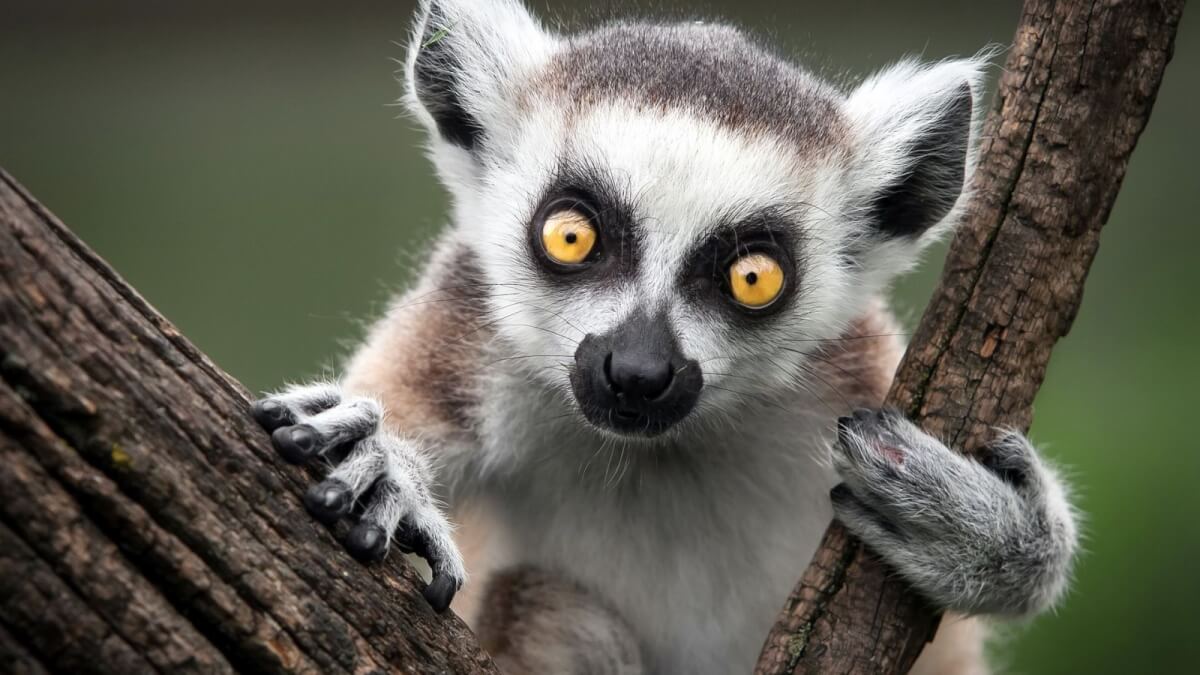
The ring-tailed Lemur is the national animal of Madagascar and has a lifespan of up to 18 years. Like all lemurs, the ring-tailed is native to the island of Madagascar of the coast of Africa. Ring-Tails are very social and can live comfortably with up to 30 other ring-tails. As with other Lemurs, ring-tails Social interactions are female dominant. The ring-tailed Lemur currently classifies as an endangered species and just as of last year in 2017, it believed that there are less than 2,000 lemurs left as a result of poaching habitat lost and the exotic pet trade.
Manatee
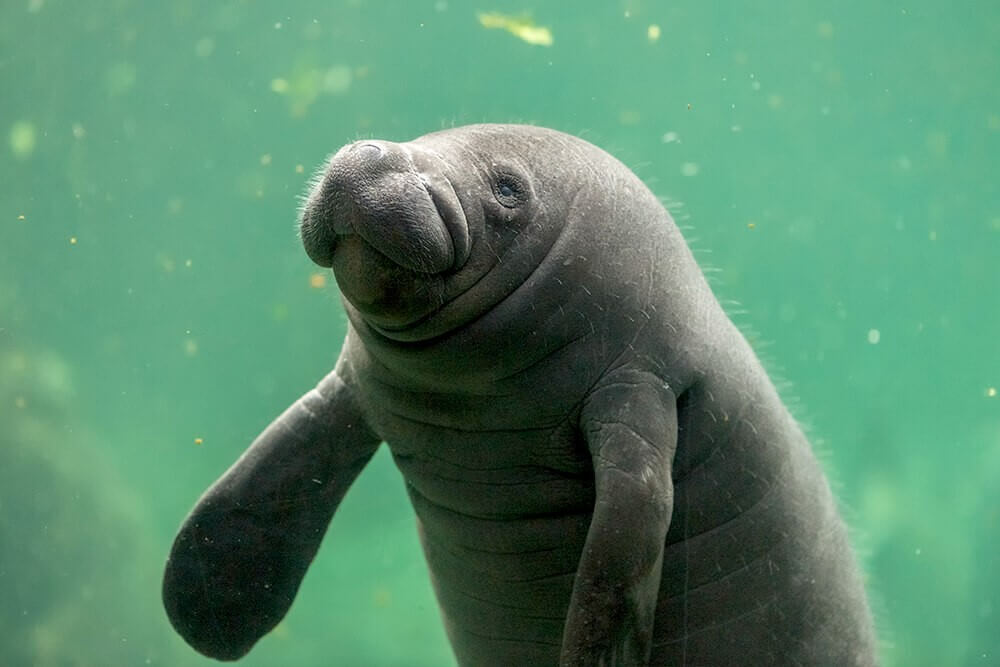
Manatees or sea cows as some people call them are not actually related to cows, but rather elephants. They appear to be extremely slow-moving creatures, but manatees can reach speeds of roughly 15 miles per hour. Although 15 miles per hour isn2019t a comfortable speed for them, so instead they tend to swim along at a speed of fives miles per hour. When swimming a Manatee must come up for air every three or four minutes otherwise a drifting manatee can stay underwater for up to 15 minutes. Half of a manatees day is spent sleeping under water with the other half spent munching on sea plants.
